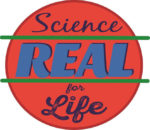By Ashley Richards Best and Casey Steadman
Winter officially started Dec. 21, 2016. The date is based on the winter solstice, when the northern hemisphere experiences the day of the year with the shortest daylight. The days get shorter approaching the winter solstice and longer after.
 During this time of the year, the northern hemisphere is tilted away from the sun. The sun is lower in the sky, changing the angle at which the sun’s rays hit the Earth. These two factors are what contribute the colder climate in the winter.
During this time of the year, the northern hemisphere is tilted away from the sun. The sun is lower in the sky, changing the angle at which the sun’s rays hit the Earth. These two factors are what contribute the colder climate in the winter.
Winter weather describes the day-to-day state of the atmosphere – what it is doing. Winter climate describes the overall trend in the weather on a long-term scale.
Changes to the climate during the winter take place regularly. Plants and animals rely on signals from the weather to decide when to stop hibernating or when to start growing. Warm or mild winter days prematurely signal the start of spring, resulting in drastic effects for life on the planet.
Understanding winter weather can help keep you prepared for the season, as well aid in your understanding changes in the climate during winter.
THE SCIENCE BEHIND WINTER WEATHER
Scientists called meteorologists study the changes in atmosphere in order to forecast future weather. Using a variety of sophisticated instruments, as well as historical information, these scientists predict the weather with great accuracy.
The following provides you with background information intended to support teachers in their understanding of this content.
- Temperature
Temperature is a measurement of how fast the molecules in a substance are moving. The faster they move, the warmer the substance gets. Energy from the sun causes gas particle in the atmosphere to move faster, increasing the temperature. The region of Earth experiencing winter, receives less energy from the sun, causing the temperatures in that region to drop. The atmosphere and the composition of the gas molecules in the air also affect temperature.
We describe temperature in the U.S. using Fahrenheit, while other parts of the world use Celsius. Scientists use Celsius most commonly, but occasionally will use a scale called Kelvin.
Thermometers have been the most commonly used instrument to measure temperature, where an expandable liquid – such as mercury or alcohol– is contained within an apparatus that is calibrated to measure the temperature. These thermometers are being replaced by digital gauges, which use the thermal property of a sensor to measure temperature.
- Barometric pressure
All of the air that exists above you in the atmosphere has mass, and therefore weight. We call this the atmospheric – or barometric – pressure.
If you are at sea level, the weight of the air is heavier than if you were on top of a mountain. Taking a 1-centimeter cross-section of the atmosphere, from sea level to the outermost bounds of the atmosphere, the air column would weigh a little more than 2 pounds.
Changes in the barometric pressure occur frequently due to variations in temperature and geography, creating high- and low-pressure systems.
- Wind direction and speed
Low-pressure systems are often associated with “bad weather.” The ground is warmed by the sun, which in return warms the air close to the ground. Warm air rises to the higher levels of the atmosphere, where the water condenses and forms clouds.
Wind is generated by the flow of air from high-pressure systems toward areas of low-pressure, replacing the air that has risen. High-pressure systems are associated with “good weather” – clear skies and little wind. When the pressure of an area changes from low to high or high to low, adverse weather occurs.
Wind speed and direction for a particular region and time of year is consistent and called the prevailing wind. To measure wind speed, an anemometer is used. Little has changed about the anemometer since its invention in the 1400s; hemispheric cups – or vanes – rotating about an axis trap the air, causing the device to spin. The number of revolutions the cups take about the shaft in a period of time is proportional to the average speed of the wind.
Wind direction is measured by a windsock or a wind vane. However, many things can be used to measure wind direction. All that is necessary is an object that can move in with minimal resistance.
- Winter precipitation
Snow isn’t the only frozen precipitation that occurs on Earth. Occasionally, snow falling to the ground will start to melt on the way down, but then encounter another pocket of cold air that causes it to freeze again. This refrozen snowflake is more of an ice pellet, which is referred to as sleet.
Freezing rain is similar to sleet, but it does not encounter the last cold pocket so it doesn’t refreeze. When freezing rain hits the cold ground, it immediately freezes and turns to ice.
Sometimes during winter precipitation, we see sleet before snow, or maybe even a mix of rain, freezing rain, sleet and snow. Seeing these types of precipitation at once or within a short period of time means that the temperatures the precipitation is falling through are changing, perhaps quickly.
Hail, on the other hand, isn’t a winter weather phenomenon; it occurs primarily in the summer. For hail to form, tiny ice pellets found within cumulonimbus (storm) clouds collide with water particles. As these pellets gain mass, they fall toward the ground, but encounter strong upward wind that carry them back into the cloud where they can collide with more water particles. The more times this cycle repeats, the larger the hail gets. Ultimately, the hail will be too heavy for the wind to continue carrying it upward and it will fall to the ground.
- Polar vortex
The past few years, we have heard more and more about the phenomenon of the polar vortex. This term is often used by meteorologists to tell us that it is about to get very cold, very fast, but what does it really mean?
The polar vortex is an extremely cold wind that is normally present at the North Pole blowing from west to east. Most of the time, it stays up at the North Pole, but sometimes this line of winds gets a bend in it. This means that instead of blowing from west to east over the North Pole, the wind plunges south and comes across Canada and even the United States.
WHAT STUDENTS SHOULD KNOW ABOUT WINTER WEATHER
Grades K-2
Students are starting to understand the difference in seasons and that weather is predictable. Most children have heard Mom and Dad talk about preparing for snow, rain or heat. Students at this grade band begin to make associations between the appearance of dark clouds with rain, or intense sun with the need to wear sunscreen. Winter is a great and fun way to demonstrate some of various ways water is found on Earth.
By the end of grade 2, students need to know:
- ESS2.D – Weather and Climate: Weather is the combination of sunlight, wind, snow or rain, and temperature in a particular region and time. People record weather patterns over time.
- ESS2.C – The roles of water in Earth’s surface processes: Water is found in many types of places and in different forms on Earth.
- ESS3.B – Natural Hazards: In a region, some kinds of severe weather are more likely than others. Forecasts allow communities to prepare for severe weather.
Suggested learning experiences:
Students have had the chance to experience winter weather over the past few months. Relating to these experiences can help engage students in developing their understanding of the weather. Ask students if they remember their parents talking about the hazards of ice or snow, or if they have any relatives that complain about large snowstorms. What are some examples of places you think of that have snow? What do those places have in common? What hazards are there in the winter that are not present in the summer?
Grades 3-5
Students are starting to predict weather patterns on their own. Without even thinking about it, they are making observations and coming to conclusions about what the weather will be like. They see dark, cloudy skies and think their soccer game might get canceled. They feel the temperature getting warmer every day and know that summer break is approaching. Drawing on these types of decision making can aid in students’ understanding how weather patterns over time contribute to climate.
By the end of grade 5, students need to know:
- ESS2.D – Weather and Climate: Climate describes patterns of typical weather conditions over different scales and variations. Historical weather patterns can be analyzed.
- ESS3.B – Natural Hazards: A variety of hazards result from natural processes. Humans cannot eliminate hazards, but they can reduce their impacts.
Grades 6-8
Students are well aware of the role that differing weather can play in their lives. They may even have begun to check the daily and weekly forecasts when thinking about their upcoming plans. They understand that while weather can affect their day-to-day activities (Snow Day!), but they also realize that weather is difficult to predict.
Students now should understand that humans have quite the influence over their environment – including the climate. Winter is a great time to discuss climate change, since climate change is often only associated with warming trends in the arctic. However, there is increasing evidence that this arctic warming does not necessarily mean warming for everyone, but more volatile weather at both ends of the temperature spectrum.
By the end of grade 8, students need to know:
- ESS2.D – Weather and Climate: Complex interactions determine local weather patterns and influence climate, including the role of the ocean.
- ESS2.C – The roles of water in Earth’s surface processes: Water cycles among the land, ocean and atmosphere, and is propelled by sunlight and gravity.
- ESS3.D – Global climate change: Human activities affect global warming. Decisions to reduce the impact of global warming depend on understanding climate science, engineering capabilities and social dynamics.
Ashley Richards Best is a fifth-year doctoral student and National Science Foundation graduate research fellow at the University of Louisville. Casey Steadman is a third-year doctoral student at the University of Louisville.
Send us pictures of your experiments and we’ll feature them on Kentucky Academy of Science’s Facebook page and Twitter! Want to know more about winter weather or have some questions? Shoot us an email at executivedirector@kyscience.org.




Leave A Comment